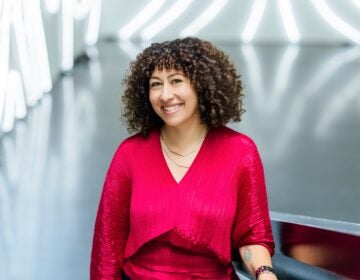‘Convalescence’ at Philly’s Jefferson Hospital is an immersion into health care inequities
Pepón Osorio’s installation centers on patients of color experiencing traumatic medical crises.
From Philly and the Pa. suburbs to South Jersey and Delaware, what would you like WHYY News to cover? Let us know!
Several years ago, Pepón Osorio started losing weight. A lot of weight. Too quickly. He got concerned.
The first object visitors encounter at Osario’s new, immersive installation at Jefferson University Hospital, “Convalescence,” is the bathroom scale that triggered his journey through a medical crisis.
“I had lymphoma,” he said. “A rare case of lymphoma: mantle cell lymphoma.”
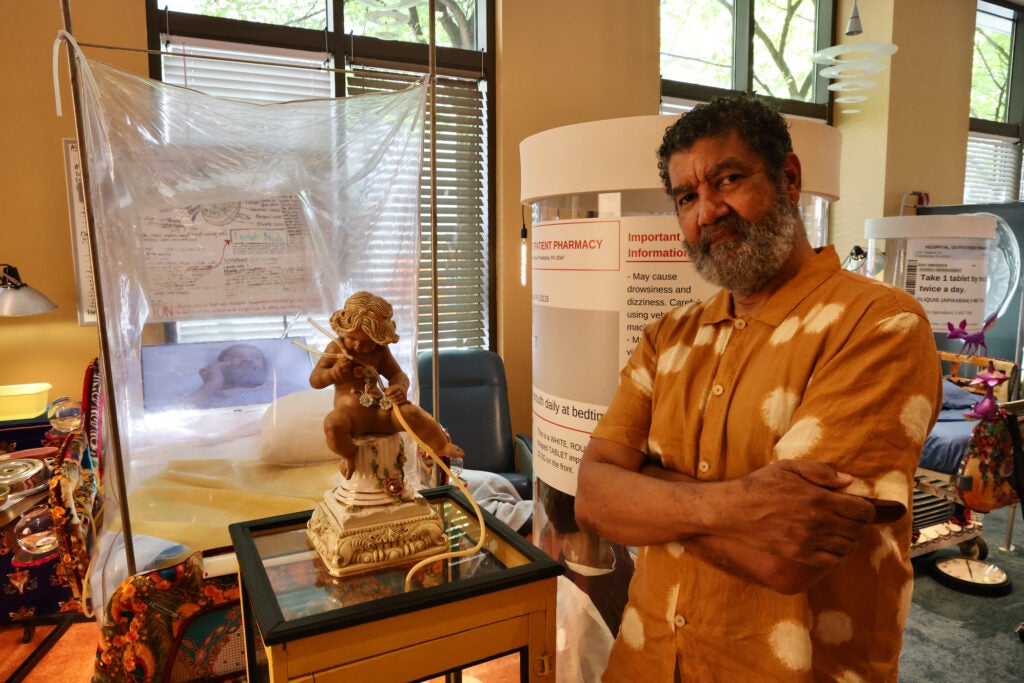
During Osorio’s seemingly endless series of doctor appointments, hospital stays, and chemotherapy sessions, he met a lot of people along the way. Many were like Osorio — patients of color suffering dire conditions.
“As I was getting treatment I heard many stories,” said Osorio, who is Puerto Rican. “Stories about lack of medical care, lack of medical insurance, difficulties of getting to the place where they were getting treatment.”
“I’m the kind of an artist that waits for the stories to be told. They come to me,” he said. “Then I translate them visually into this kind of exhibition.”
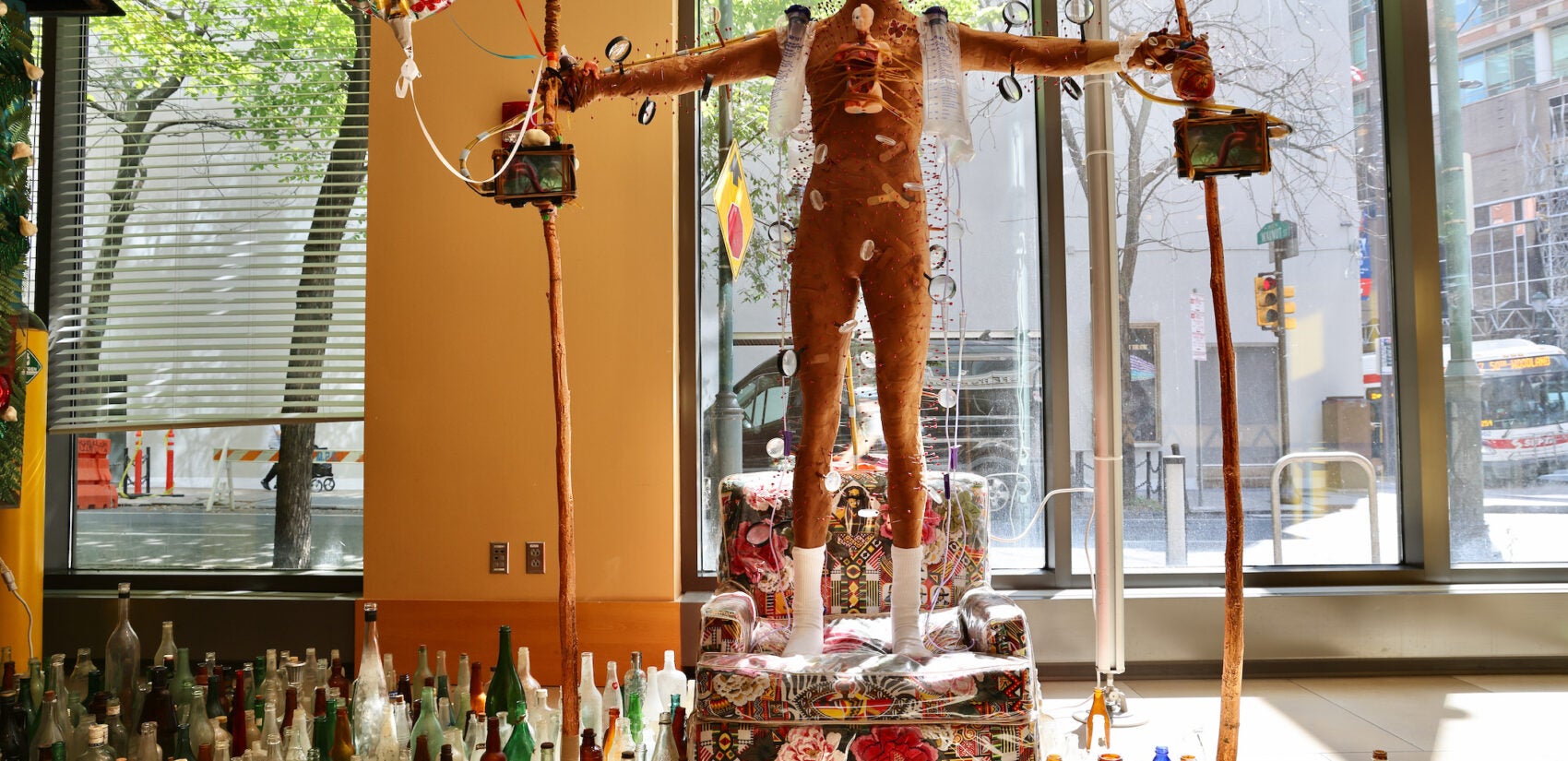
“Convalescence” starts with Osorio — a life-size mannequin punched with hundreds of acupuncture needles represents the alternative treatments he sought — but as visitors move down the hallway, it quickly becomes the stories of other people, their cultures, and their communities.
There are five hospital beds, each a tableau of an actual person, unnamed, undergoing treatment for things like a miscarriage, a pulmonary embolism, awaiting a kidney donation, and a mysterious case of undiagnosed paralysis from chronic pain.
One of the patients is Osorio, himself, undergoing cancer treatment.
“These are real-life real people and real stories,” Osorio said. “There’s nothing made up here. It’s all based on real stories.”
At the foot of each bed is a glass case containing a personal object from the patient, with a message they wanted Osorio to share with the public.
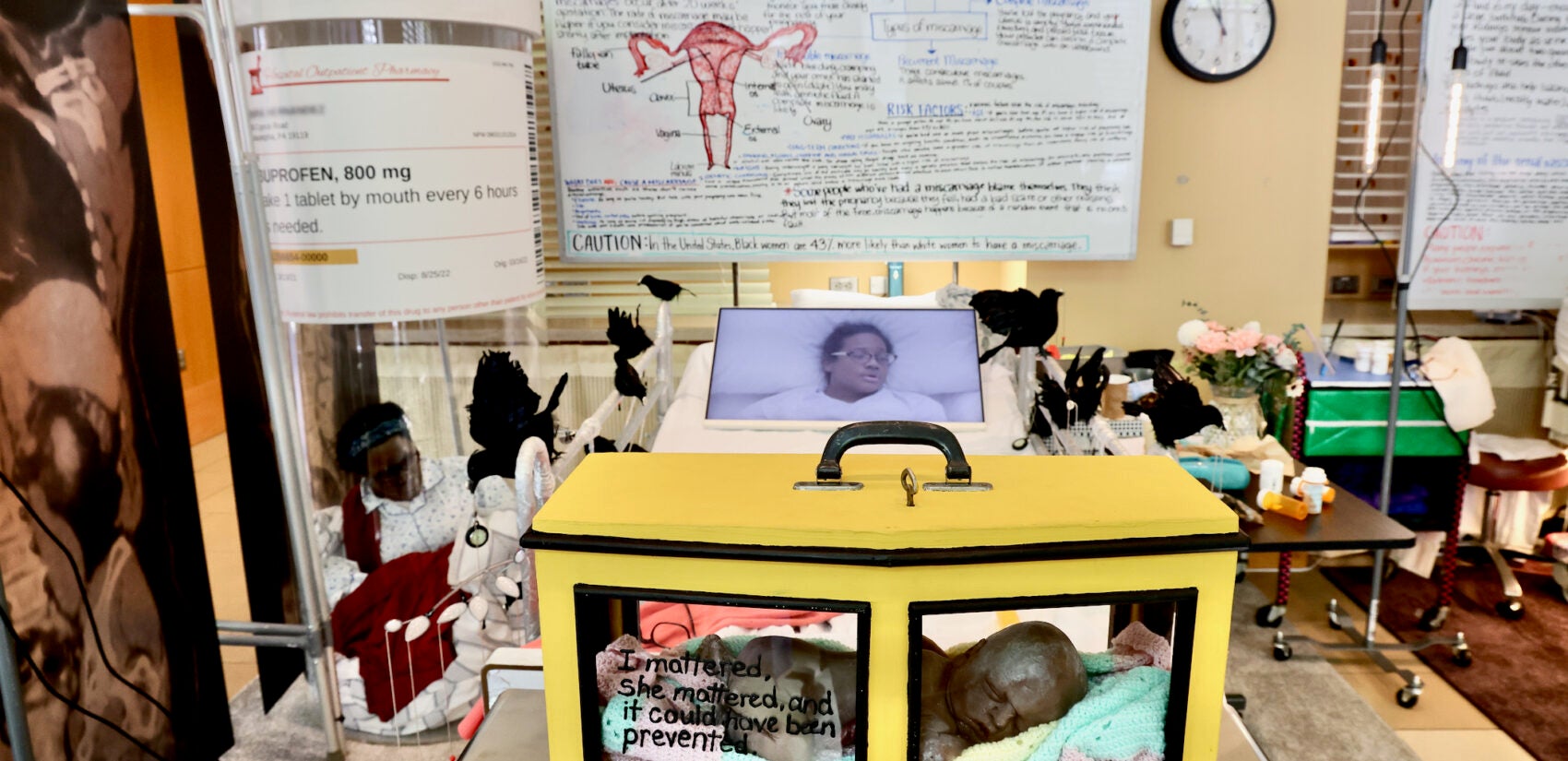
The case at the foot of the miscarriage patient contains a knitted baby blanket and a sculptural figure of a Black infant. On it is written, “I mattered, she mattered, and it could have been prevented.”
The tableau includes the statistic that Black women are 43% more likely to have a miscarriage than white women.
The bed of a kidney transplant patient is adorned with long lines of small figurines, each representing someone waiting for an organ. At the foot of her bed is written “They tell you what you want to hear, that everything is going to be okay. There’s approximately one hundred thousand people waiting for a kidney transplant.”
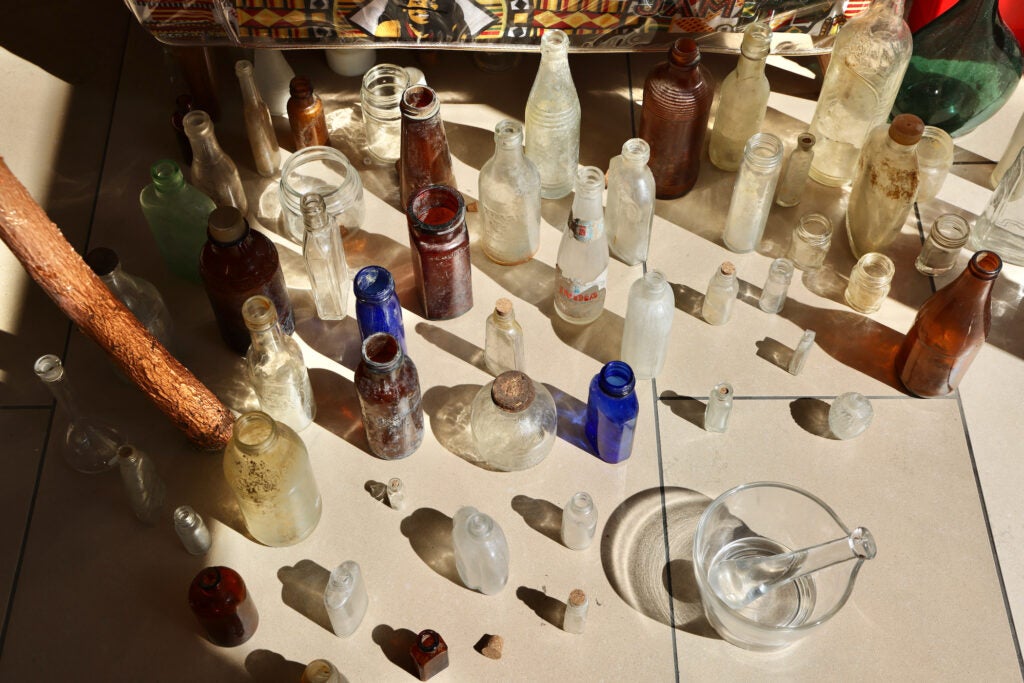
The installation is dense and messy, filled with highly personal objects and symbols that mean a lot to the people whose stories are being represented, but Osorio does not explain. Much of what is clear, is pain.
“I’m done. They need to tell me the truth,” reads the glass case of a Puerto Rican woman who has been bedridden with an unexplained paralysis. “The doctors tell me something different every time, and I’m still stuck in bed.”
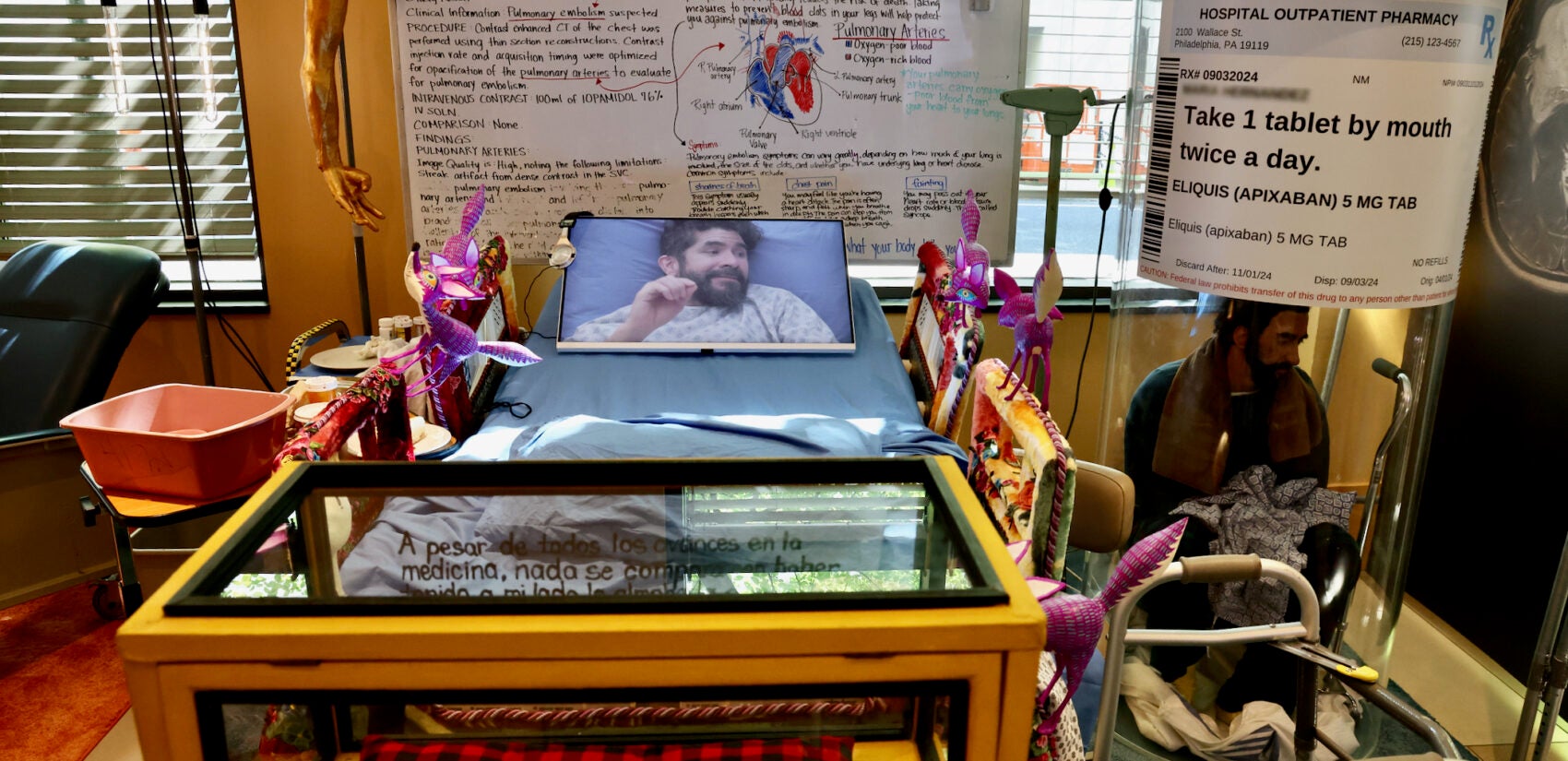
This is not the kind of art you typically see in hospitals.
“Hospitals don’t want abstract art. They want things that are clearly identifiable because they don’t want to leave room for interpretation,” said curator Rob Blackson. “What Pepón is bringing into this installation is quite a bit of abstraction. You’re seeing dueling narratives. You’re seeing complicated imagery. You’re seeing people in intense states of pain with no sense of relief.”
“That sense of deep trauma is something that this installation is trying to point to because that is a part of our lives,” he said. “It’s not here as a panacea.”
The installation is sometimes not complementary to its host. Osorio makes references to the power structure of medical institutions — including Jefferson University Hospital — that can intimidate and belittle patients, particularly those who are immigrants and people of color.
“The reason we give a lot of power and give our bodies to the medical field is because we’ve been told that we don’t know what we have,” Osorio said. “Even though I knew what was going on medically and technically, I wasn’t the expert. I just keep saying, ‘I’ve been carrying this body for 69 years. No one knows better than myself.’”
“What I wanted to do is create a balance between the treatment that I was receiving and an alternative to it that brought a completely different approach to the illness,” he said.
Part of the floor is covered with several dozen glass bottles representing alcoholado, a folk medicine of selected herbs steeped in alcohol, as a topical rub for pain relief often used in Puerto Rican communities.
Each of the five patients is represented by a life-size sculptural mannequin seated inside a giant prescription bottle, suggesting patients undergoing care from hospitals become trapped by drugs.
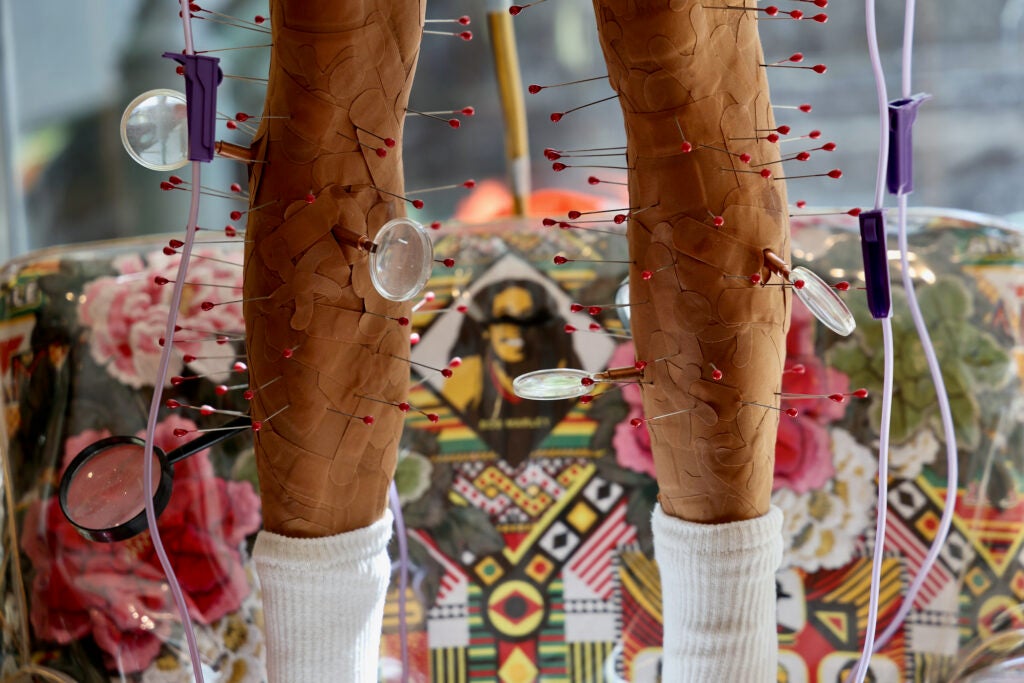
At the foot of the Puerto Rican patient suffering a pulmonary embolism is a case with a small pillow. It has the message: “A pesar de todos los avances en la medicina, nada se compara con haber tenido a mi lado almohada que mi abuelita me hizo. Fue un gran Consuelo que aun la medicina no ofrece.”
“In spite of all the advances in medicine, nothing compares with having had the pillow my grandmother made me at my side. It was a great comfort that medicine still does not offer.”
Jefferson University Hospital knew what it was getting into by hosting “Convalescence.” Megan Voeller, Jefferson’s Director of Humanities, said the shortcomings and inequities of institutional health care are not new.
“This installation is in a setting where trained professionals are often looked to as the experts, but Pepón is elevating the patient voice,” she said. “You’re hearing five extraordinarily personal accounts of life-threatening, life-changing experiences. For our community of learners and health professionals to be in conversation with that and have an opportunity to take something away from the installation is an incredible opportunity for us as an institution.”
Osorio said all five patients and their families in the show have approved of the way they have been represented. The patients are all still alive, although some have not recovered.
Osorio’s personal experience with cancer taught him that healing is not absolute. His use of the word “convalescence” is meant to be an emotional and spiritual understanding that you cannot ever fully recover from a severe medical episode.
“Accepting that you will never be the same is the hardest thing,” reads Osorio’s own message at the foot of his own tableau representation. “That is convalescence.”

Get daily updates from WHYY News!
WHYY is your source for fact-based, in-depth journalism and information. As a nonprofit organization, we rely on financial support from readers like you. Please give today.






